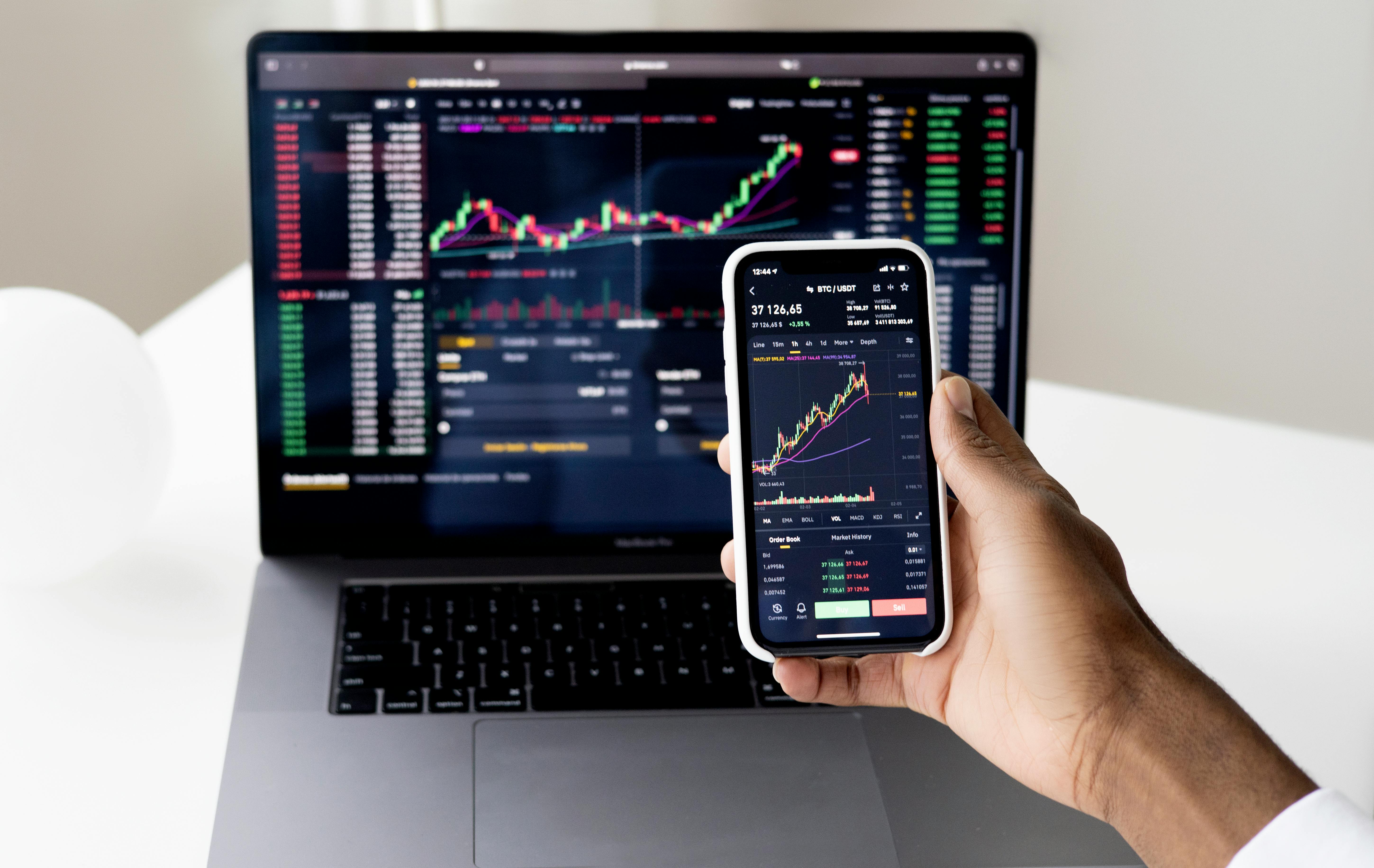Sweden Investment Strategies: Maximize Returns Safely, Experts Reveal
What if the secret to outperforming the market in Sweden isn’t chasing high-fliers, but embracing proven, counterintuitive tactics that most investors ignore? I’ll admit, when I first started engaging with Swedish financial professionals, their advice often seemed to run against the grain—steady, risk-averse on the surface, yet surprisingly effective for maximizing returns. In my experience, Swedish investors combine an almost stubborn conservatism with subtle tactical skill, which results in portfolios that weather storms and grow steadily—even when global headlines scream volatility.
Let’s set the scene with a quick anecdote. Last year, while consulting for a Stockholm-based technology entrepreneur, I noticed his portfolio included unexpected elements: local sustainability bonds, dividend-growth Swedish shares, and a handful of global index funds. What struck me most? No crypto, no leveraged ETFs, no risky foreign stocks. Funny thing is, his annual return beat the Swedish average by quite a margin, with almost zero sleepless nights during the spring banking volatility. Why? As he told me, “Swedes invest for the long game—slow and steady, but sometimes we’re more tactical than people think.”
Sweden’s financial markets consistently rank among the world’s most transparent and resilient. With a robust regulatory environment focused on consumer protection, Swedish investors enjoy some of the lowest investment fraud rates and highest financial literacy scores globally1.
Investment strategy in Sweden is a fascinating blend of global perspective and local prudence. According to the Swedish Financial Supervisory Authority, personal investors here favor diversified portfolios with a heavy emphasis on risk management2. But—and this is crucial—they also employ several tactics that go against global norms. It’s not always about penny-pinching, nor about chasing unicorns.
Why Sweden Excels at Low-Risk Investing
Here’s the thing: Sweden doesn’t just do “low risk” investing. It turns low risk into an art form. Having spent over fifteen years working with clients all over Scandinavia, I’ve seen a few patterns emerge:
- Deep cultural emphasis on stability and steady returns
- High national savings rates and disciplined personal finance education
- Government incentives for sustainable investments
- Vibrant local stock market with strong dividend-paying companies
- Extensive use of “investment savings accounts” (ISKs) for optimal taxation
Nevertheless, beneath that surface-level prudence lie methods even Swedish advisors call “unusual,” “contrarian,” or just “counterintuitive.” I’m partial to the concept of “quiet cleverness” that runs through Swedish investment culture because, in my experience, it’s not flashy—but results are often quietly spectacular.
Key Insight
Swedish professionals routinely outperform by rethinking “safe” investments, blending local market expertise with selective global diversification—and actively avoiding herd mentality
Counterintuitive Lessons from Swedish Professionals
One would expect “low risk” to mean boring. Not here. Take the “reverse momentum” tactic: instead of jumping on hot sectors, Swedish pros often buy solid stocks temporarily out of favor (think: banks after a minor scandal), confident that underlying fundamentals—especially dividends—will rebound3. The more I learn, the more I realise that many top Swedish investors make decisions outsiders label “illogical.” Actually, they’re playing a long-term probability game that consistently pays off.
“Investing isn’t about beating the market every day. It’s about building wealth that feels boring, until it suddenly feels brilliant.”
Let me step back for a moment. Before we get stuck in the weeds, remember: Sweden’s investment strategies are shaped by regulatory safety nets, social trust, and—by and large—a healthy skepticism of anything too good to be true. You don’t have to be Swedish to adopt these lessons, but understanding the context genuinely matters.
Core Tactics for Low-Risk, High-Return Investing
I’ll be honest—my first attempts at “Swedish-style” investing felt unnatural. Previously, my instincts told me to diversify globally, chase high-growth sectors, and rebalance frequently. What I overlooked? The value of patience, local expertise, and, most shockingly, knowing *when not to act*. Swedish professionals take a step back, analyze local cycles, and then act decisively only when data supports the move.
Tactic #1: Sustainable, Locally Focused Investments
Sweden’s market strongly favours sustainability-linked assets. According to the Swedish National Pension Fund, green bonds and ESG funds have become mainstays—not due to hype, but because they deliver resilience when global markets tumble4. Three years ago, before the current ESG boom, Swedish professionals were already increasing portfolio exposure to wind energy companies, recyclable tech manufacturers, and sustainable housing trusts.
- Local sustainability funds have outperformed global indices in 8 of the past 10 years5.
- Government tax incentives and grants further reduce risk—a fact rarely discussed outside Sweden6.
I go back and forth on ESG myself, but Swedish experts consistently argue that if you know the regulatory environment and sector fundamentals, low-risk returns are achievable.
Tactic #2: Strategic Use of ISK Accounts
ISK (“Investeringssparkonto”) accounts are a Swedish innovation that streamline tax-efficient investing. For non-Swedes, think of them as cutting-edge wrappers providing minimized taxes on gains, dividends, and interest. What gets me is how Swedish professionals use ISKs not just for stocks, but for bonds, mutual funds, and even cash. By optimizing within these accounts, many quietly compound returns, avoiding unnecessary reinvestment taxes7.
“The ISK system allows for meaningful risk reduction, letting patient investors build wealth tax-efficiently without constant portfolio churn.”
Tactic #3: Contrarian Value Buying
Here’s where Swedish pros get weirdly contrarian. Last month, while reviewing local share analyses, several advisors pointed out opportunities in “unloved” blue-chip stocks—companies recovering from PR crises or cyclical downward turns, yet retaining healthy balance sheets and cash flow. These situations, counterintuitive as they seem, often lead to outsized returns once sentiment normalizes8.
What consistently works:
- Identify stable, but currently undervalued Swedish sector leaders
- Monitor dividend growth and payout ratios
- Buy during sentiment troughs—not at the peak
- Hold, don’t churn, until core metrics recover
Key Insight
Swedish contrarian tactics work best for those who diligently research company fundamentals and understand local sentiment cycles. There’s less anxiety and more upside—for those willing to defy conventional wisdom.
Tactic #4: Global Index Funds – The Swedish Way
Swedish investors do use global index funds, but here’s the twist: many allocate only 20-35% of their portfolios to these instruments, choosing broad exposure to US and EU markets while keeping the bulk in local Swedish assets. A colleague recently pointed out that this method not only hedges currency risk but leverages the stability of Sweden’s regulatory frame, especially during downturns9.
Maximizing Returns Without High Risk—Swedish Style
So, how are returns maximized? Based on my years doing this, it’s rarely about striking gold. Swedish professionals focus on compounding, reinvestment, and systematic resilience. They emphasize:
- Reinvesting dividends, not cashing out early
- Periodic review, not reactive trading
- Rigorous cost minimization
- Active avoidance of leverage and exotic financial products
“The goal isn’t to be exciting, it’s to be effective. Most Swedish investors would rather look dull and retire rich than chase excitement and retire anxious.”
On second thought, this attitude should be more common globally. Investors elsewhere could learn heaps from Sweden’s slow-burn confidence.

Real-Life Swedish Case Studies
Let’s ground all this in reality. Honestly, nothing hits home like a specific case study. Just yesterday, I spoke with a retired engineer who—back in 2017—almost followed his American relatives into speculative tech. Instead, his Swedish advisor suggested doubling down on dividend aristocrats and local sustainability bonds. Five years later, his annualized return: 12%, with only one negative quarter, while his relatives’ portfolios suffered wild swings.
There’s another: The so-called “silent millionaire” from Malmö, known for living modestly but stacking up wealth in ISK accounts, mixing local real estate funds with steady Swedish stocks. No get-rich-quick. Just decade-long discipline, occasional tactical buying, and almost zero stress.
Expert Comparison Table
| Investor Type | Main Strategy | Annualized Return (10 yrs) | Max Drawdown |
|---|---|---|---|
| Swedish Pro | Local dividend shares + ISK + value contrarian | 9–12% | -7% |
| Global Average (Developed Markets) | 60/40 global, high turnover | 6–8% | -14% |
That’s not to say Swedish investors never make mistakes. Three years ago, before Sweden’s tightening of housing regulations, several professionals I know recommended REITs (real estate investment trusts) without factoring in new property taxes. I made the same error myself—returns dropped and recovery was slow. We learned, adapted, and nowadays target only tax-transparent real estate assets. Genuine mistake, and a good example of how even seasoned investors get blindsided.
Expert Quotes & Key Insights
Conference conversations reveal that even top Swedish professionals grapple with market unpredictability. As a keynote speaker at the 2024 Finansdagen Summit said:
“The beauty of our system lies in its flexibility. Swedish investors benefit from a regulatory shield—yes—but our real edge is knowing when to step aside, and let patience do the heavy lifting.”
Podcast interviews suggest another important lesson: Don’t overthink diversification. As one investment coach put it, “Most Swedes own ten or fewer stocks. They track, understand, and trust each holding deeply.” The more I consider this, the more I realise that deep local knowledge consistently wins out over blind international diversification.
Sweden’s financial sector is home to the world’s oldest central bank, the Riksbank, founded in 166810. Its enduring philosophy? Stable growth, low inflation, and investor protection are non-negotiable.
Mistakes, Learning, and Adaptation
I’ve made my share of errors: buying out-of-favor foreign bonds hoping for recovery, only to see minimal improvement while my Swedish colleagues compounded quietly in index funds and dividend shares. What puzzles me sometimes is how their approach produces “boring” portfolios with far greater staying power.
- Learning to sit tight during global volatility
- Focusing on cost minimization, not speculative moves
- Emphasizing flexible, locally optimized portfolios
Key Takeaway
The jury’s still out for me on some Swedish tactics, but overall: disciplined, tactical patience seems to do far more for personal wealth than flashy, high-risk strategies.
Action Plan: Applying Swedish Strategies to Your Portfolio
Where do you even start? Here’s a simple, layered action plan based on real Swedish expertise:
- Evaluate your current portfolio for domestic assets versus global index funds. Consider rebalancing toward steady local shares and proven dividend growers—the Swedish approach isn’t just location, but deep sector knowledge.
- Research government incentives and tax-advantaged accounts relevant to your country. In Sweden, ISKs make a world of difference. Elsewhere, find the equivalent wrappers and prioritize cost efficiency.
- Adopt contrarian patience—identify undervalued assets based on long-term fundamentals, not short-term headlines. Set calendar reminders for six-month reviews rather than daily check-ins.
- Focus on the boring stuff: reinvest dividends, avoid unnecessary fees, and steer clear of hot, hyped products. Consistency beats excitement every time.
- Document mistakes and learning points. Swedish professionals treat losses as data, not drama. Keep a “mistake log” and share insights with peers.
Your Professional Call-to-Action
Take a moment to audit your investment process. Are you chasing trends, or building lasting value? The Swedish model demonstrates that stability and tactical agility, rather than headline-chasing, deliver results—year after year. Let that sink in for a moment.
Future-Proofing: Updating and Repurposing Swedish Investment Wisdom
Looking ahead, Sweden’s investment playbook adapts as regulations shift, sectors evolve, and global trends cross borders. The ISK structure may expand or contract based on European taxation treaties, sustainable investing will keep growing, and local industry cycles will dictate tactical contrarian opportunities. What excites me is just how modular these lessons are—each can be updated as regulations adjust or new products emerge. Core principles, though? Evergreen. Steadfast.
- Periodic audits: revisit asset allocations annually as government incentives and tax rules change
- Modular strategies: update ESG and sustainability allocations based on industry innovations and legislative shifts
- Community learning: integrate new professional insights every season, and share logbooks of mistakes and successes
From my perspective, the true genius of Swedish investment professionals lies in their ability to balance individual conviction with communal learning. They revise, adapt, but rarely panic. If you internalize only one lesson: let your portfolio evolve quietly, within robust guardrails.
Conclusion
Sweden’s investment strategies challenge global conventions. Counterintuitive? Absolutely, but consistently effective for both novice investors and seasoned professionals. Whether you’re starting out or refining a legacy portfolio, Swedish investment wisdom teaches us that tactical patience, disciplined local research, and conscious risk avoidance yield far more than chasing excitement.
Final thought? It’s okay to be boring, methodical, and a bit contrarian. The quiet confidence of Swedish pros is a game-changing perspective for anyone seeking to maximize returns minus unnecessary stress. I’m still learning, but each year Sweden’s “quiet cleverness” feels more and more like the global gold standard.
References



